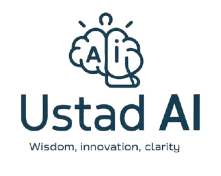Generative AI in Medtech: Innovation Driving the Future of Healthcare
In a rapidly changing healthcare environment, innovation is no longer an option but a necessity. The smart devices, advanced software platforms, and real-time data pipelines are leaving behind what has quickly become a slow-moving, paper-appointment way of working and introducing new layers of intelligent, predictive, and coordinated digital healthcare.
And at the very top of this digital transformation is Generative AI.
No longer an overused phrase, Gen AI is already being used in nearly all layers of healthcare, from research and development (R&D) to commercial ops, regulatory transparency, and compliance. A recent McKinsey article suggested that the productivity gain potential for Medtech through GenAI will be worth between $14 billion to $55 billion annually, plus another $50 billion+ of new revenue potential through new product and service innovation using AI-enabled technology.
Let’s explore how Generative AI is changing the landscape of healthcare product programs, what key performance indicators (KPIs) matter the most, and how we are measuring innovation in a more sophisticated way than just precision, but also user experience.
The Transformation of Healthcare: From Paper Documentation to AI Agents
The traditional models of healthcare—think of paper records, scheduling manually or in person, etc.—can no longer keep up with a fast-moving, data-heavy world of medicine. Both healthcare providers and patients are demanding better, faster, and more effective ways of interacting, diagnosing, and opting for care.
Today’s hospitals and Medtech companies are rapidly transitioning to intelligent systems that can:
- Analyze patient data in real time
- Summarize complex scientific literature
- Facilitate clinical decision making
- Automate labeling and documentation
- Schedule and manage logistics and supply chains
The capabilities are being increasingly powered by Gen AI. GenAI is a type of AI that can generate text, code, designs, and even clinical insights from enormous data sets.
And it’s getting noticed by healthcare professionals.
According to a 2024 McKinsey survey, approximately two-thirds of Medtech executives reported having already deployed generative AI in their companies. About 20% of the companies are already scaling these types of GenAI solutions up in their operations, and they are seeing measured benefits in productivity and efficiency.
The Vanguard of Innovation: R&D at the Forefront of the Gen AI Wave
Across the healthcare landscape, R&D has been the first area to leap and subsequently benefit the most from generative AI.
R&D teams are using Gen AI to:
- Review academic and clinical research papers
- Prepare and edit regulatory documents
- Provide options for hypothesis-driven experiments
- Identify biomarkers or drug-drug interactions
- Accelerate the early stages of product ideation and feasibility studies
Remarkably, a lot of this adoption is happening informally. Individual scientists and researchers have begun using Gen AI tools (ChatGPT, Claude, BiomedGPT, etc.) to advance their work process, irrespective of whether there is an official company strategy on the use of Gen AI for research and development.
Consequently, some organizations are reporting increases in research productivity between 20–30% as researchers can automate routine administrative activities and point the time spent to exploring science.
Gen AI is still not a substitute for human judgment—yet. All outputs need expert reviewing, especially in regulated industries. Nevertheless, the technology is enabling researchers to achieve more output, faster, and with potentially fewer errors.
Outside the Lab: How Gen AI Makes Healthcare More Efficient
Innovation goes beyond research and development. Gen AI is now assisting Medtech companies with their overall operations, including:
– Regulatory and Clinical Documentation: Automating submissions as well as audit trails and post-market surveillance reports.
– Supply Chain Management: Demand forecasting, inventory management, and vendor coordination.
– Sales and Marketing: Generating content and messaging for new products and summarizing clinical value.
And the results are remarkable. According to McKinsey alone, labeling assisted by AI has improved operational efficiency by 20%–30%. The time and cost savings are rippling through functions that were once slow, manual, and prone to errors.
But these events are not just about savings; they are also about accelerating time-to-market. In healthcare, every day gained in launching a new medical device or treatment can impact patients’ lives and the company’s profit.
Key Performance Indicators That Matter in an Era of Intelligent Healthcare
In a world driven by data, you can’t manage what you can’t measure.
Key performance indicators (KPIs) are critical to understanding the health of the work we, as healthcare product developers, do. The KPIs are not only for assessing how quickly we develop products, but also help assess if we are developing properly for safety, whilst being patient-centric and sustainable.
There are countless KPIs, but the most important KPIs to assess the clinical effectiveness of modern Medtech are below:
|
KPI Category |
Key Metrics |
| Operational Efficiency | Time to market, resource utilization rates, and process automation levels |
| Clinical Quality | Safety incidents, adverse event rates, and clinical trial success ratios |
| Financial Health | R&D ROI, cost per patient treated, revenue from innovations |
| Patient Experience | Net promoter score (NPS), satisfaction surveys, and accessibility of services |
For product development specifically, time to market, labelling efficiency, and document quality have emerged as the most significant KPIs contributing to regulatory approval timelines, product readiness, and market competitiveness.

Where Design Meets Function: Innovation Driven by User Experience
Healthcare innovation can no longer be defined by gigabytes, RPMs, or operating margins alone; user experience now has equal weight.
For example, the UX Design Awards highlight healthcare products that are centred around a human experience and innovative design with technical excellence. Winning products work and can be a joy to use for both health professionals and patients alike.
The CIARTIC Move by Siemens Healthineers is an excellent example of innovation in imaging tech and a leap in sterile-field usability and UX. The CIARTIC Move is a fully autonomous, 3D C-arm imaging system that can be wirelessly controlled by surgeons in their sterile field during a procedure.
Take a look at ASUS’s HealthConnect App and VivoWatch Series wearable products that combine consumer wearables and medical standards. The AIoT (AI + Internet of Things) device has the ability to help healthcare professionals track patient wellness in real-time while providing an easy-to-use interface. If used properly, tracking will seem engaging, familiar, and approachable.
These products are evidence that the experience has taken precedence in the design of healthcare, and now accessibility, usability, and empathy are the cohorts that make it possible.
Putting Together Regulation and Innovation: The Two Tracks of Change
In healthcare, regulation is not an afterthought = it is a track to be considered and integrated into every moment of innovation.
Gen AI is proving to be a valuable ally in understanding and managing this very complicated regulatory process. AI augmented tools now support teams with:
- Drafting and redlining compliance documents
- Mapping real-world evidence into submission
- Tracking the global regulation updates in real time
- Keeping clinical and regulatory outputs aligned when using an agile approach
There are many possibilities for companies to plan ahead and include regulatory considerations early in their product plans to mitigate costly and time delays in approvals.
“As we move toward increasingly patient-centric and agile approaches to development, we’ll need a regulatory mindset built into the team’s early discussions about compliance”, reports McKinsey.
Simply put, the smartest companies are not waiting until the end of some development cycle to be worried about compliance = they are baking the regulatory decision into the DNA of every choice they make.
Conclusion: A Healthcare Renaissance Powered by AI
Innovation is neither new to healthcare nor a new emphasis on innovation in healthcare, but we are living in a time where something fundamentally new is happening. Generative AI is not just improving workflows in existing processes—it is redefining the entire way that we conceive, produce, and deliver medical products.
From a grassroots adoption in research labs, to an award-winning design of a product for the marketplace, to incredible potential of incorporation into an agile regulatory environment, it is obvious that the momentum is shifting. Ultimately, we are witnessing the emergence of a new age in healthcare—an age where AI is augmenting not just speed and scale, but also imagination, empathy, and precision.
We are just getting started.
As Gen AI continues to evolve, we will see that the Medtech winners will be the ones who can harness its capabilities responsibly, strategically, and collaboratively, and keep the human in the innovation process.




08n7kb